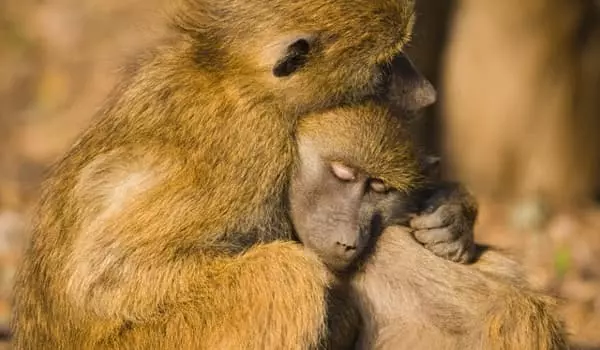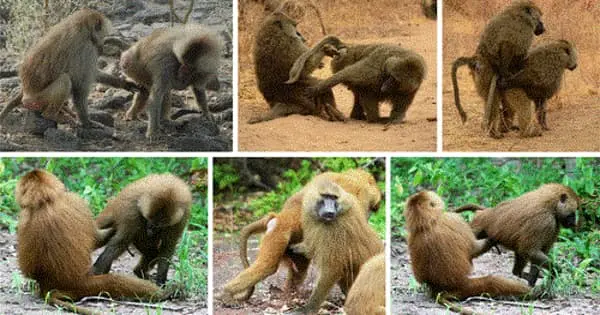A research team has shown that members of a group of baboons can establish shared social conventions – in this case, by all agreeing on how to solve a problem in order to receive a reward faster. This is the first time that such conventions in an animal species have been studied experimentally.
In an experiment with a group of baboons, French researchers observed non-human primates developing social conventions to work together to obtain a reward. Twenty baboons raised at a primate center were given the task of making the same choice when presented with a set of two images on touch screens in pairs. If both animals made the same decision, they received a treat.
There are three ways to say hello or goodbye: kissing, shaking hands, or bowing. These gestures are social conventions: they are recognized by all members of a group and allow one to address greetings quickly and appropriately. Conventions aid in the resolution of coordination “problems” that the group frequently encounters by providing efficient, stable, and arbitrary solutions.
Gestures like shaking hands, embracing, or bowing are social conventions that help groups solve problems, according to the article. Language is one big convention. From the beginning, people had to agree on the meanings of words.” It’s unclear how the baboons managed to share their hierarchy with one another.
Formaux
However, conventions are not unique to the human species, as evidenced for the first time by the findings of an experiment conducted at the CNRS primatology center in Rousset-sur-Arc by researchers from the Cognitive Psychology Laboratory (CNRS/Aix-Marseille Université) at the CNRS primatology center in Rousset-sur-Arc. Guinea baboons established common rules for the entire group in about three days after being presented with a device that required the coordination of two individuals.
The baboons were given the following task: two different images were chosen at random from a set and displayed on screens to two monkeys. The baboons had to choose the same picture if they wanted a reward, implying that there was more than one possible answer to the experiment. Individuals had to come up with a solution to the problem and agree on the choices to be made as a group.

While previous research had shown that primates were capable of social conventions such as grooming, this is the first time that a new behavior has emerged spontaneously in a group without human intervention.
The experiment was carried out by the CNRS, a French national research institute, and Aix-Marseille University. The baboons developed a hierarchy for the images presented over the course of tens of thousands of tests, according to the researchers. The baboons could initially see what was happening on the other animals’ screens, but in the second phase of the experiment, that visual cue was removed.
The primates quickly developed a hierarchy of images: for example, they chose the pink square when it was presented with a light blue square, and they chose the yellow square when it was presented with a pink or light blue square. When the two baboons were unable to see each other, the group’s overall performance was unaffected. This implies that the baboons did not simply use imitation as a strategy to solve this problem, but rather coordinated on these choices.
These baboon conventions are stable over time, efficient, and arbitrary because the choice of images was not predetermined. As a result, they demonstrate the three characteristics of human social conventions. To detect such conventions, the scientists propose that groups of non-human primates in the wild be observed in novel ways.
By repeating the experiment with black and white designs, the researchers ruled out the possibility of a simply shared affinity for certain colors. According to the study, in order for a behavior to be considered a social convention, its benefit must apply to the entire group, it must be consistent, and it must be one of several solutions.
Gestures like shaking hands, embracing, or bowing are social conventions that help groups solve problems, according to the article. “Language is one big convention,” Formaux explained. “From the beginning, people had to agree on the meanings of words.” It’s unclear how the baboons managed to share their hierarchy with one another.
















